Perfect poached chicken - back cheat guy (白切鸡)
A recipe, based on sous vide principles, for perfect poached chicken. This recipe is based on the Cantonese preparation, but simplified and modified for temperature-accurate cooking.

Poaching is one of the best ways to cook wonderful chicken: I'm not talking standard supermarket tasteless frozen pale chickens, or bland American-raised all-white-meat oversized creatures with three inch thick breasts that walk around like the avian equivalent of Pamela Anderson. Eating recently in a high end restaurant in the Bay Area, we had a very yellow chicken where the yellow colour from turmeric had actually even soaked into the meat and cavity bones - gross. Such things shouldn't be poached. Here, to poach, I'm talking chickens like the famed Poulet de Bresse from France, the fabulous native pasture raised Taiwan chickens, or the Ping Yuen three yellow chickens in Hong Kong.
Doing a perfect job of poaching a chicken is tricky. Instructions abound, talking about everything from how long to simmer, how should the meat be on the bone, should the bone be red inside or not, how to deal with the skin shrinking, all sorts of dunking rituals to get to the perfect temperature and heaven knows what. However as those of us who occasionally cook the odd steak know, sous vide cooking has taken almost all the ritual and guesswork out of preparing perfectly cooked steak every single time. With the advent of the steam oven, we can even do accurate sous vide temperatures but without needing the bag of 'vide' – leave our protein in a pan to cook absolutely perfectly.
Thus here we go: A recipe, based on sous vide principles, for perfect poached chicken. This recipe is based on the Cantonese preparation, but simplified and modified for temperature-accurate cooking. I was going to record a video of this but found cooking videos very very hard indeed (kudos to those that make them).
i. Start with a fabulous chicken and clean it.
Here in London, I have acquired a Label Rouge Poulet Fermier Jaune from France. Label Rouge chickens have been raised in a traditional, healthy and free range way. Note that this picture was taken from the web site of the chicken producer since mine didn't come out so well. This chicken was 81 days old and has far more flavour than your typical one, yet — because of the cooking method — still comes out juicy and tender.

I chopped off the head and neck (not into that), kept the feet, and heated a stock pot full of boiling water. It's important to clean the heck out of the chicken: In the neck area and in the inside cavity, make sure there is literally nothing left in there. Scrub it out with a toothbrush. I then heated a large stock pot full of boiling water, turned it off, dunked the chicken in and out twice (lifting under the wings with chopsticks to do so, to empty then replace the water in the cavity) to make sure that any last bits of scum were gone, then dunked it in a pot of ice cold water to make sure it doesn't cook further. After that, any last remaining bits of feathers can be pulled out easily too. The result: a clean, lightly blanched, cold chicken ready to cook.
ii. Make the base broth for poaching
The advantage of poaching one's chicken is that, after the process, a pot of lovely chicken broth is left over for further use. It can be used for poaching vegetables, adding to steamed fish soy sauce, or as the basis for a much richer soup. A small amount of broth is also reheated to warm the refrigerated chicken. The chicken gives flavour to its poaching broth, and in turn draws in a little flavour too.
For the broth, I prepared the following ingredients in addition to the chicken, as in the picture below:
- A chunk of shredded ham - either jinwah ham or jamon which are dry, umami packed slabs of wonder. Ham taste with chicken are a match made in heaven and the two are commonly cooked together.
- A couple of dried scallops (conpoy) which given the broth a sweeter, even more umami flavour. Dried scallops (along with ham and dried shrimps) are the key ingredients that makes XO sauce taste so rich and good.
- Two slices of ginger
- A couple of spring onions
- Two teaspoons of salt and a teaspoon of sugar
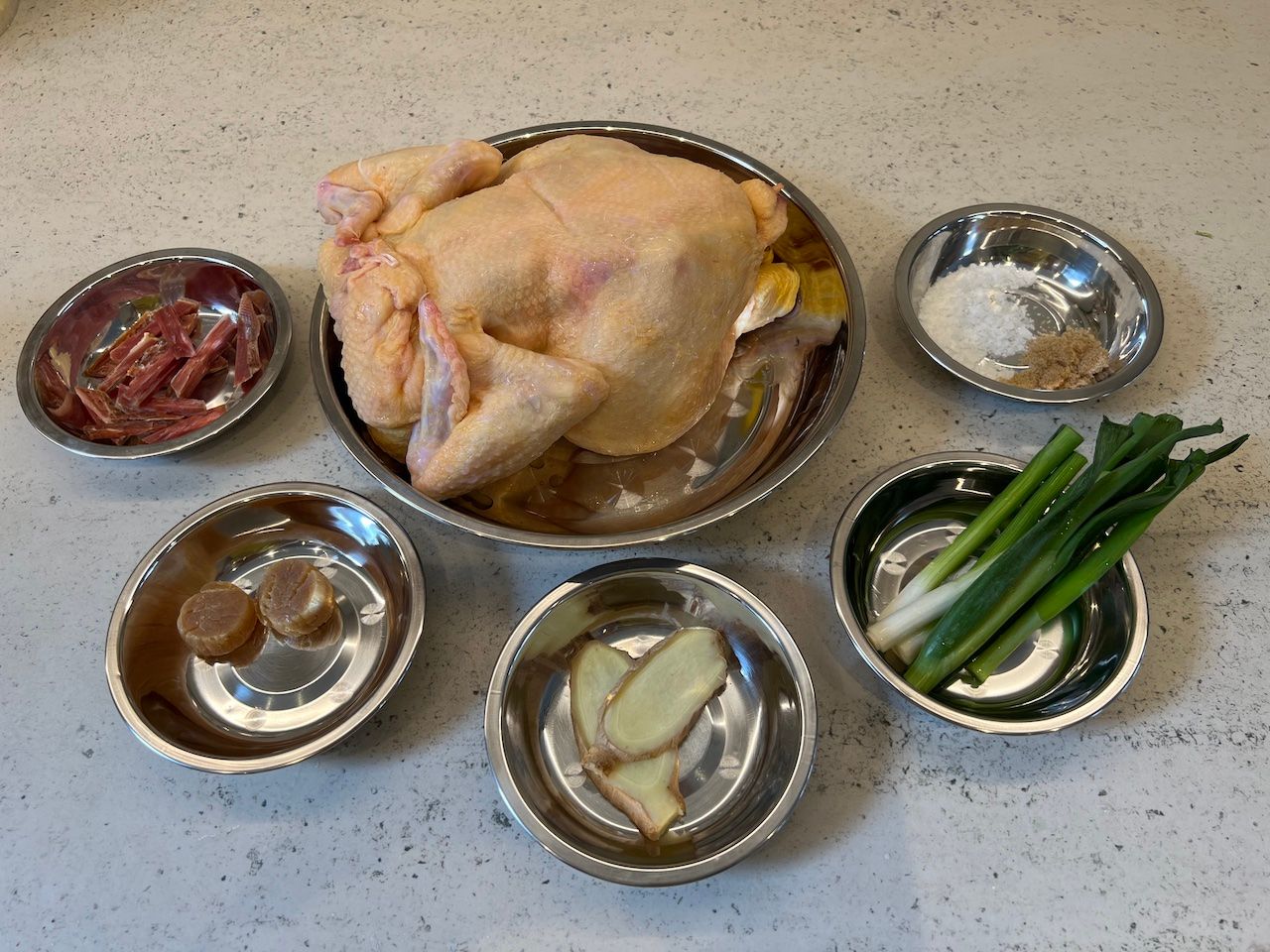
Before starting the broth, pre-heat the steam oven to 64C. Then start the broth on the stovetop: Put the chicken in an empty stock pot and add just enough water to cover it, perhaps 1cm more. Take the chicken out, lob in all the other ingredients (ham, conpoy, ginger, spring onion, salt, sugar) then boil the broth (knowing we have the right amount of water) for a couple of minutes.
iii. Cook it at 64C for 6-8 hours
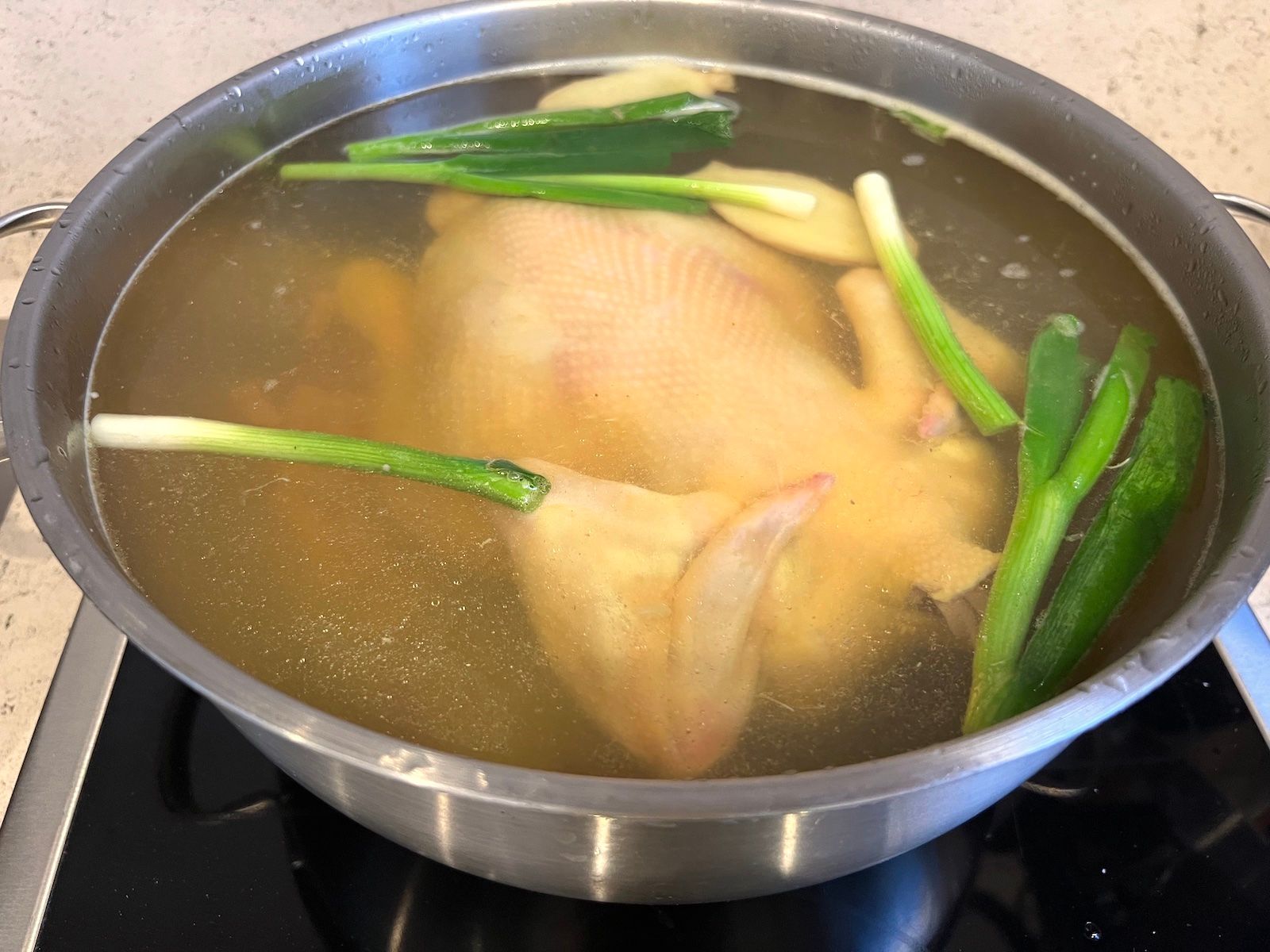
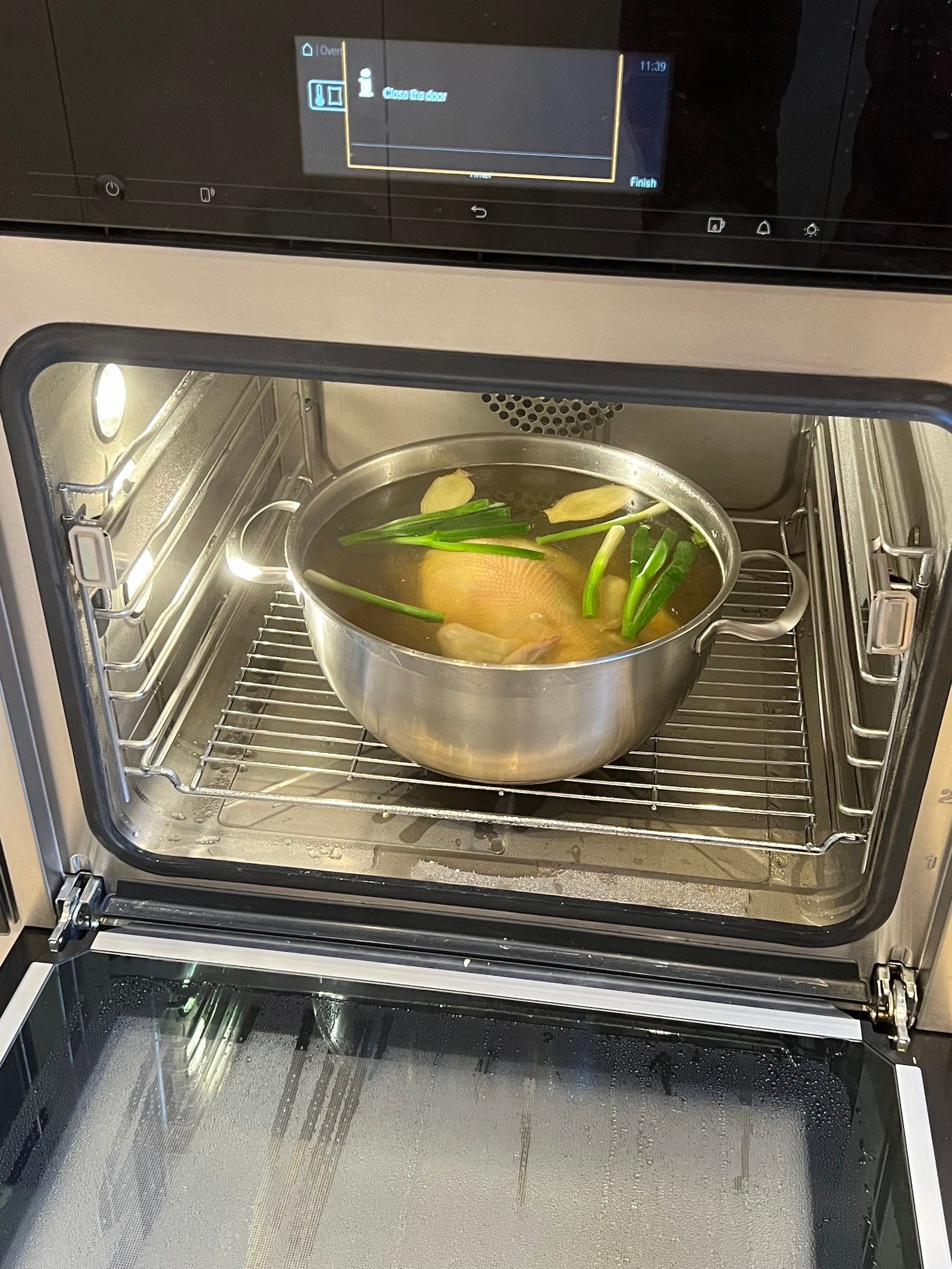
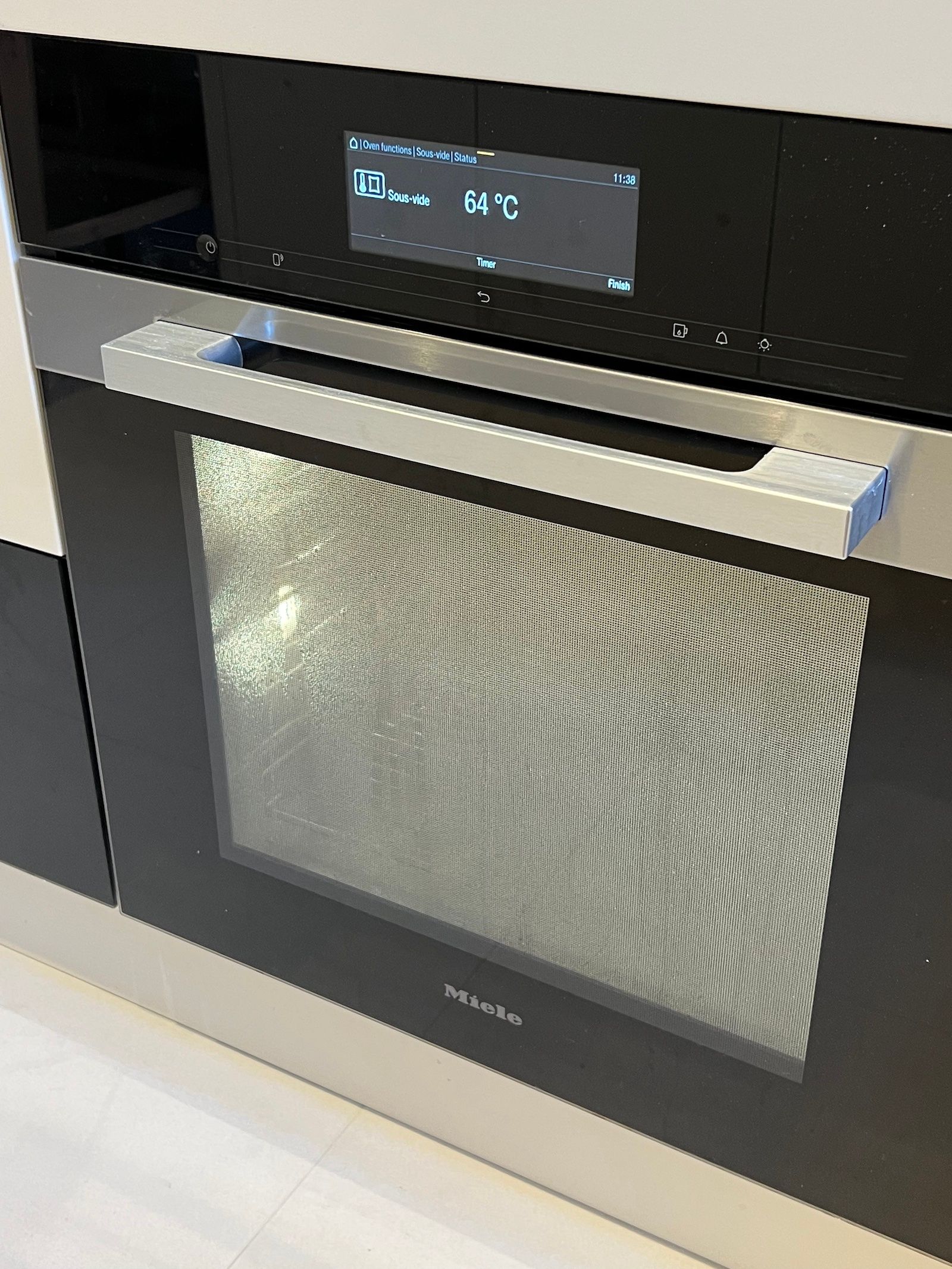
Once boiling, turn it off again, put in the chicken, lift the chicken out by sliding (not poking) chopsticks under the wing to drain the water from the cavity (that routine again) and then submerge it one last time, tilting and rotating its posterior to make sure there's no air left inside. If using tongues, be careful to use silicone ones so that the skin is never torn.
Put the whole stockpot with the submerged chicken into the steam oven, pop the lid on, then steam it at 64C for 6-8 hours depending on the size of the chicken. You don't want the legs stuck in the cavity because doing so will create thicker sections of meat that take longer to cook through. You know the chicken is done if you spear into the thigh and the juices run clear, not red - but if the chicken is a reasonable size, 6 hours will do and there's no need.
Why 64C? Well, much below this temperature, chicken is even more juicy but doesn't have a whole lot of meat texture to it. It tends to be a bit smoother than meat one is used to eating and the red meat, while fully cooked, may look a little bit too red such that it scares people off. At 65C and above, though, it starts to get every so slightly stringy which isn't what I'm personally looking for. In all these cases the chicken is perfectly pasteurised due to the long cooking duration involved.
iv. Take it out and give it a freezing cold bath
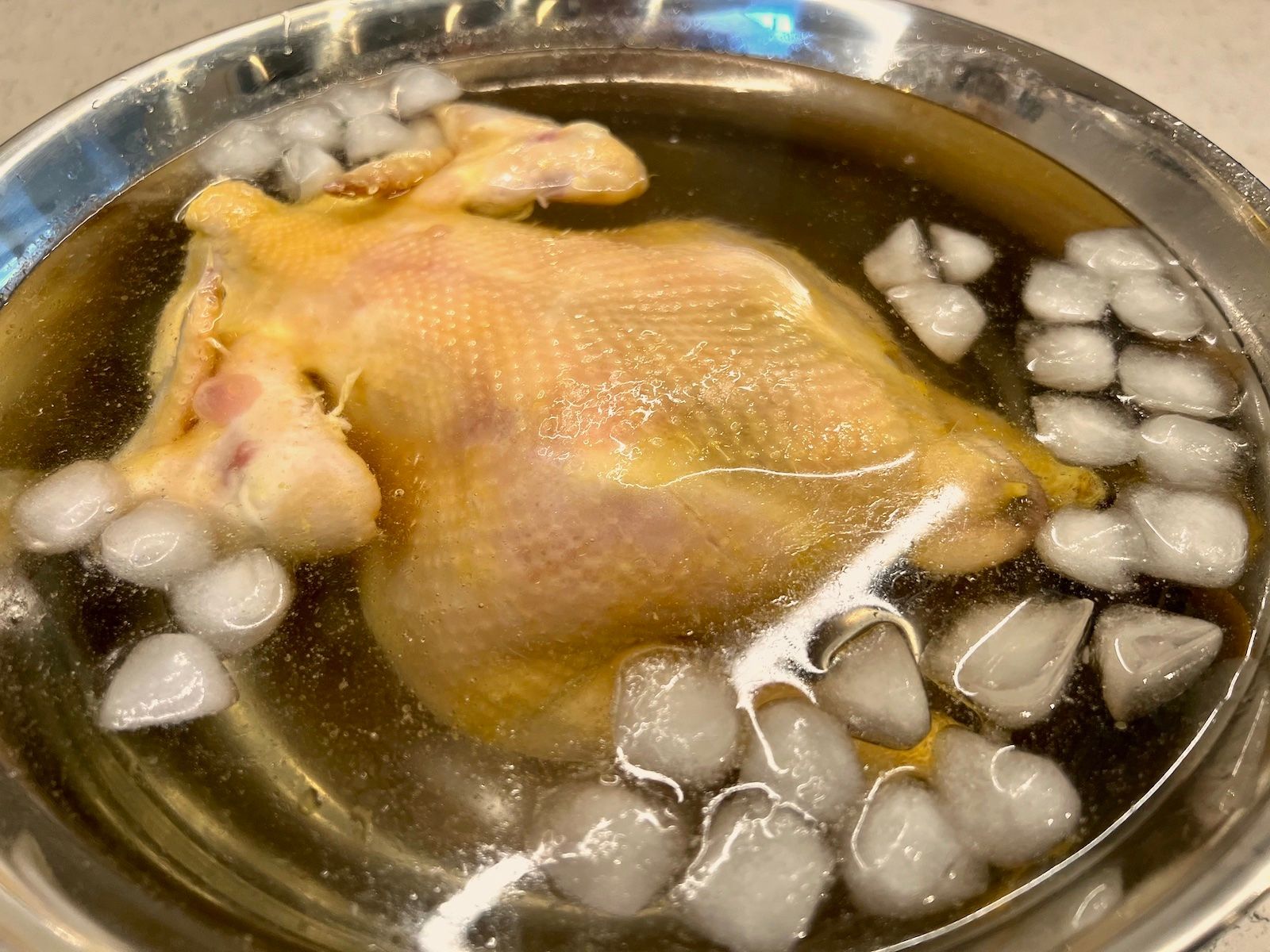
Prepare a bowl full of iced water. After 6-8 hours, remove the stockpot from the steam oven. Lift the chicken out using chopsticks slid under the wings, then dunk it straight into an ice bath:
After it's fully cool, the skin will be nice and tight. Let it air dry a bit, patting it very gently with a towel to help, and you can brush some peanut oil (or something less lethal for those with allergies) onto it to make the skin shine.
v. Chop or carve the chicken and put it in the fridge until eating time
At this point the chicken is done and cool. I'm not good at chicken chopping but you can see my attempt here. The key is that you'll find the bones are still red inside, the meat is perfectly cooked but not stringy and still exceptionally juicy:


The only slight downside of the approach of icing the chicken is that the chicken is cold and it actually tastes better slightly warm, but we don't want to cook it again, especially when it's chopped. The solution? Reheat a little of the cooking broth, then pour a ladle of it over the chicken briefly on its plate before draining immediately. Do this twice, and it'll be slightly warm, but not so warm the fat melts or the chicken overcooks.
vi. Make some ginger/spring onion oil for dipping
The perfect dipping sauce for Cantonese poached chicken is some ginger/onion oil. This is really easy to make and looks like this:
- Separately chop and mince the crap out of some spring onions and ginger – or whizz them. I like a ratio of 2:1 for spring onion:ginger.
- Heat a puddle of peanut oil in the bottom of a wok until just below smoking point. Toss in the ginger, let it sizzle and turn the flame off in that order. With the heat still off, add the spring onions and a generous teaspoon or two of salt - perhaps 5 seconds after adding the ginger if you move fast enough!
- Add in a splash of sesame oil, and more salt if you like, then put in a small bowl.
vii. Enjoy your chicken and save the broth, too!
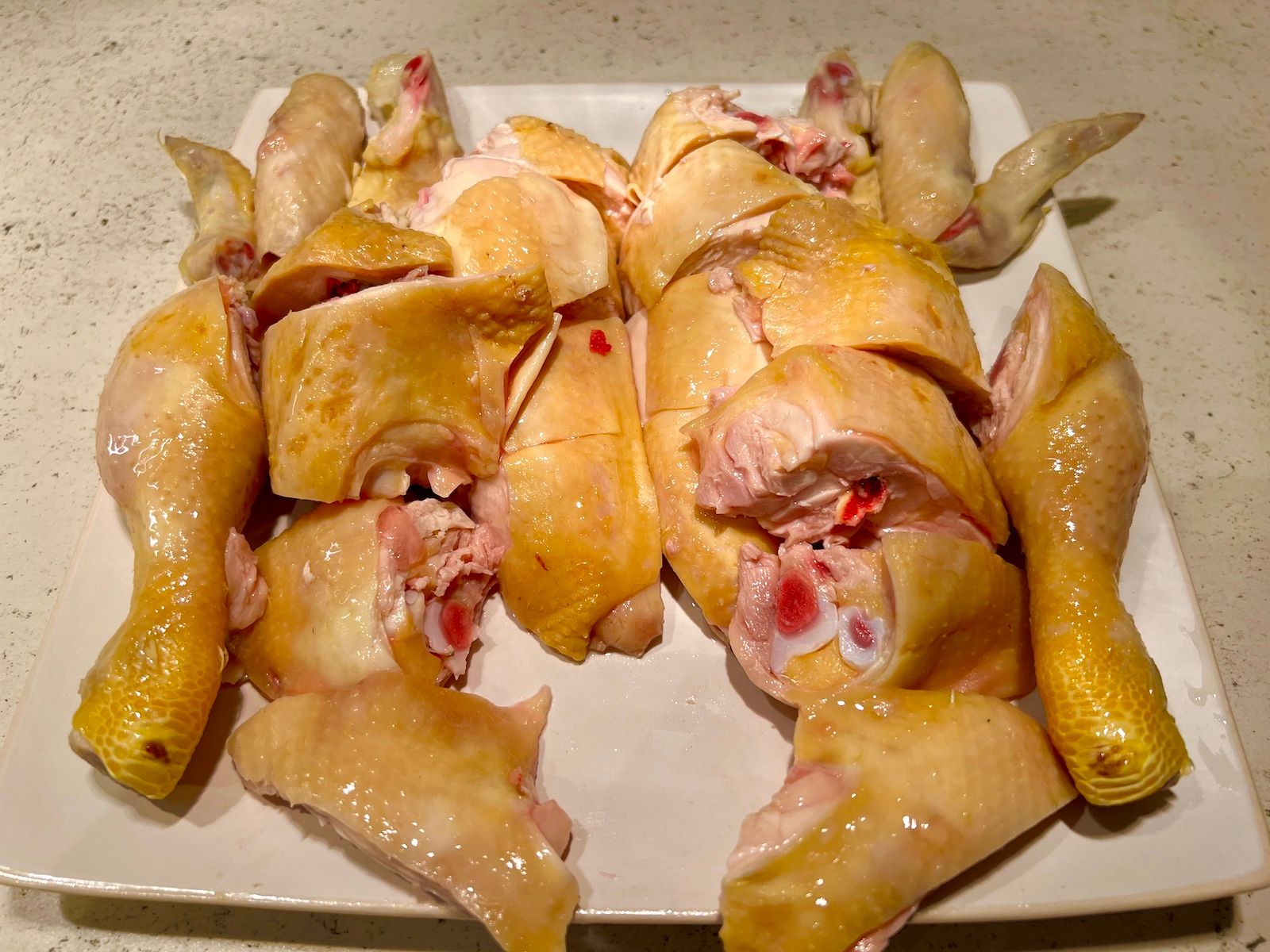
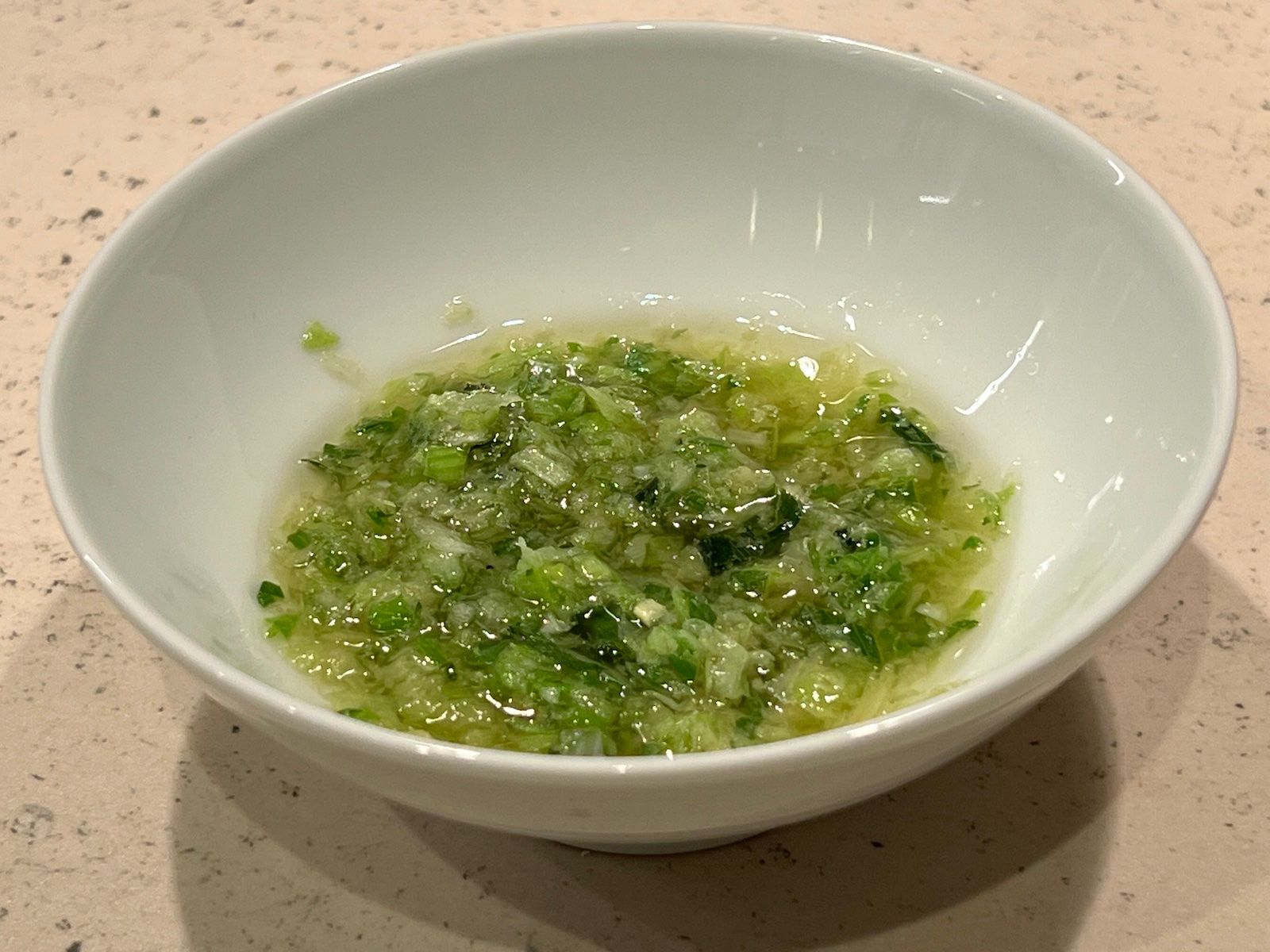
Give yourself a pat on the back and enjoy what's perhaps the most perfectly cooked poached chicken in the world :D
The remaining soup has all sorts of uses. It is fairly light soup, despite the presence of the ham and scallops. If you like, you can reduce it; if not, keep it in the fridge for 3-4 days for making other soups, cooking beans, reheating poached chicken (by ladling over, described above), poaching vegetables etc.
